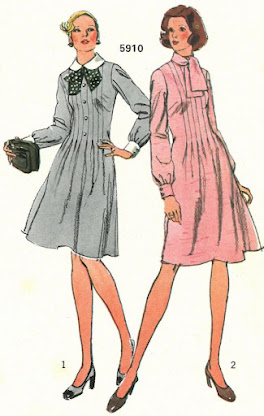I was looking at my files the other day, and realised that if I wanted to I had enough materials from the 1960s to post about nothing else for the next ten years! While I'm not going to go that far, I thought it was time I revisited the decade. Here, then, are some illustrations from the Australian Home Journal's winter pattern catalogue from 1960.
The catalogue has a minimum of information about each pattern illustrated—you are given a one or two-word description of the garment, and the amount of material needed to to make up the pattern sized for a 36-inch bust.

Fortunately the patterns themselves would have contained more information, including an instruction sheet and some general hints on the back of the pattern envelope. However, we can only guess at what kinds of materials would have been used to make up these patterns. (Some of the dressmaking guides of the time suggest that some of the "new synthetics" were hard to sew, so it's possible that home dressmakers used a lot of natural fibres!)
There seems to be an equal mix of slim and bouffant skirts depicted here. On the whole, fashions are more formal and more fitted than they would become later in the decade.
There are two evening "frocks" on this page (one very formal), but the others are accessorised in a way that hints they may have been worn to cocktail parties or to a restaurant.
... And some more smart "frocks" on the back page. Though there are four models in the illustration, in fact only two patterns are depicted here. Dressmakers had choices in how they adapted the patterns for their own use: different waistlines, different necklines and wide or slim skirts.































